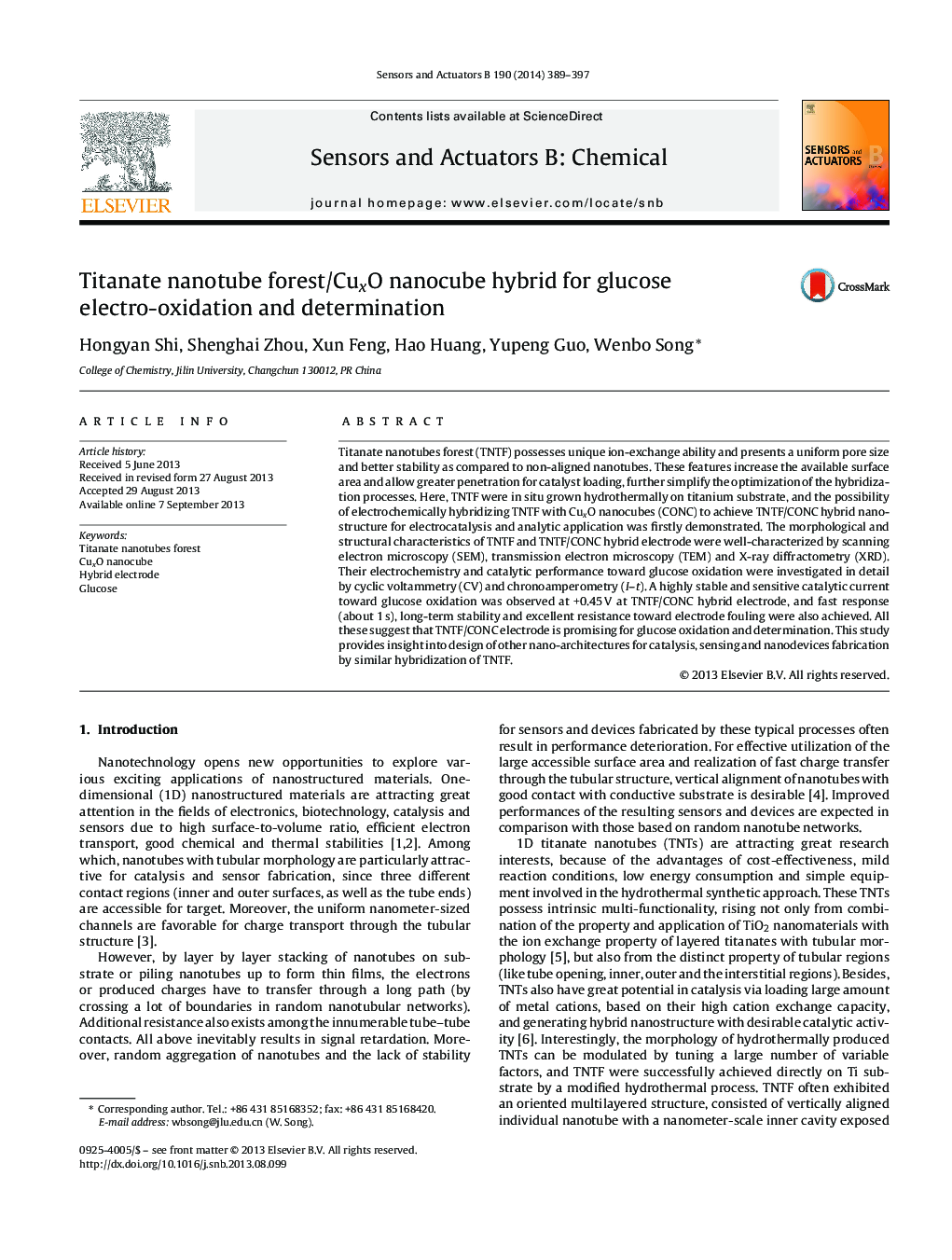| Article ID | Journal | Published Year | Pages | File Type |
|---|---|---|---|---|
| 7147956 | Sensors and Actuators B: Chemical | 2014 | 9 Pages |
Abstract
Titanate nanotubes forest (TNTF) possesses unique ion-exchange ability and presents a uniform pore size and better stability as compared to non-aligned nanotubes. These features increase the available surface area and allow greater penetration for catalyst loading, further simplify the optimization of the hybridization processes. Here, TNTF were in situ grown hydrothermally on titanium substrate, and the possibility of electrochemically hybridizing TNTF with CuxO nanocubes (CONC) to achieve TNTF/CONC hybrid nanostructure for electrocatalysis and analytic application was firstly demonstrated. The morphological and structural characteristics of TNTF and TNTF/CONC hybrid electrode were well-characterized by scanning electron microscopy (SEM), transmission electron microscopy (TEM) and X-ray diffractometry (XRD). Their electrochemistry and catalytic performance toward glucose oxidation were investigated in detail by cyclic voltammetry (CV) and chronoamperometry (I-t). A highly stable and sensitive catalytic current toward glucose oxidation was observed at +0.45Â V at TNTF/CONC hybrid electrode, and fast response (about 1Â s), long-term stability and excellent resistance toward electrode fouling were also achieved. All these suggest that TNTF/CONC electrode is promising for glucose oxidation and determination. This study provides insight into design of other nano-architectures for catalysis, sensing and nanodevices fabrication by similar hybridization of TNTF.
Keywords
Related Topics
Physical Sciences and Engineering
Chemistry
Analytical Chemistry
Authors
Hongyan Shi, Shenghai Zhou, Xun Feng, Hao Huang, Yupeng Guo, Wenbo Song,
